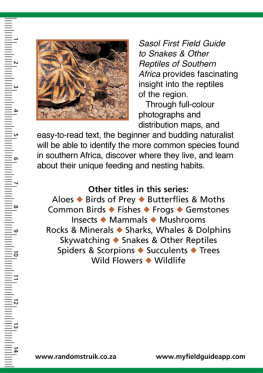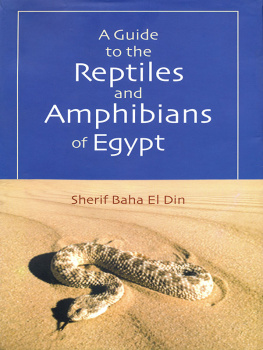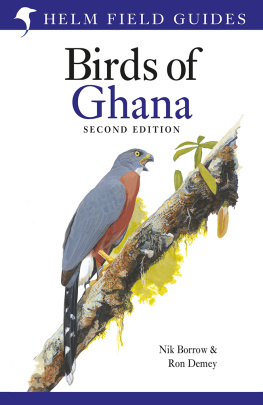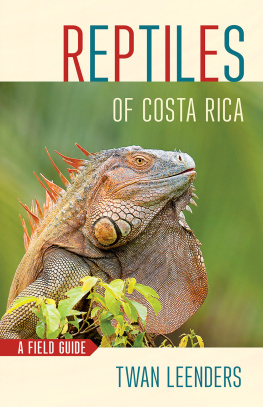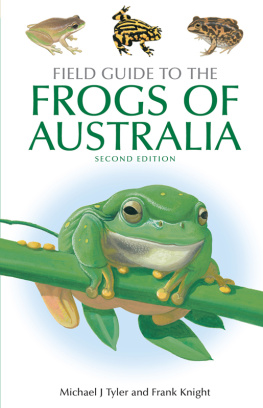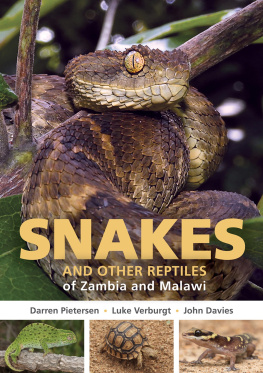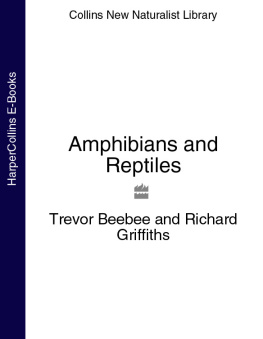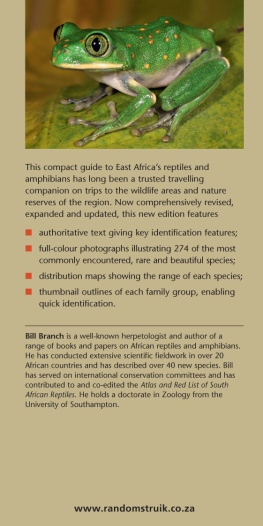New Mexicos Reptiles & Amphibians

New Mexicos
Reptiles & Amphibians
A Field Guide
R. D. Bartlett & Patricia P. Bartlett

2013 by the University of New Mexico Press
All rights reserved. Published 2013
Printed in the United States of America
18 17 16 15 14 13 1 2 3 4 5 6
The Library of Congress has cataloged the printed edition as follows:
Bartlett, R. D. (Richard D.), 1938
New Mexicos reptiles and amphibians : a field guide /
R. D. Bartlett and Patricia P. Bartlett.
pages cm
Includes bibliographical references and index.
ISBN 978-0-8263-5207-1 (pbk. : alk. paper) ISBN 978-0-8263-5208-8 (electronic)
1. ReptilesNew MexicoIdentification.
2. AmphibiansNew MexicoIdentification.
I. Bartlett, Patricia, 1949 II. Title.
QL653.N6B37 2013
597.809789dc23
2013012721
CONTENTS
SPECIES LIST
Note: Until recently this frog was contained in the genus Eleutherodactylus and the family Leptodactylidae.
REPTILES
Note: Until recently both New Mexican blind snakes were contained in the genus Leptotyphlops.
Note: Some researchers now place the whipsnakes and coachwhips in the genus Coluber with the racers.
Note: It has been recently suggested that all of the kingsnakes contained herein as subspecies of Lampropeltis getula should be elevated to full species.
Note: Until recently all New Mexican skinks were contained within the genus Eumeces.
Note: Until recently all New Mexico whiptails and racerunners were contained in the genus Cnemidophorus.
1
ABOUT AMPHIBIANS AND REPTILES
AMPHIBIANS
Today, the class Amphibia, a grouping of creatures that came into existence some 350 million years ago during the Devonian period, contains about 5,500 species that are divided into three divergent groups: the frogs (including toads and treefrogs), the salamanders, and the caecilians. Only the first two groups occur in New Mexico, the frogs and the salamanders, and there are just 27 species.
Though of diverse appearance, amphibians have many characteristics in common. They have moist skins; lack hair, feathers, or scales; they lack true claws; and by definition (but sometimes not in actuality) amphibians lead a double life, most spending their larval state in the water and their adult life on land.
As they metamorphose from larva to adult, amphibians undergo dramatic body reorganization. They resorb their external gills, most develop lungs and eyelids, and all New Mexican species grow legs. Their skin cells adapt to largely nonaqueous environment. During metamorphosis their mouths are reshaped, their intestine shortens, and other internal changes occur.
But the double life is not always apparent. New Mexico is a state with little standing water, and our amphibian species reflect this. Two of the salamander species in New Mexico skip the water-dependent larval stage.
Allow us to define a few words that you will see many times in the text:
Anuran = a tailless amphibian; a frog, toad, or treefrog.
Caudatan = a tailed amphibian; a salamander.
The term frog is less cut and dry, for in actuality toads and treefrogs are often referred to as frogs but the term is not suitable when so used. An analogy would be that all robins are birds, but not all birds are robins.
The larvae of all frogs, toads, and treefrogs are called tadpoles or pollywogs; those of the salamanders are referred to simply as larvae, or in the case of the larger ambystomatids, as waterdogs.
Tadpoles have internal gills (external when first hatched), modified scraping mouthparts, and lack eyelids. Larval salamanders have external gills.
Most tadpoles are herbivorous and have a very long intestine to enable them to process and digest vegetable matter. Larval salamanders consume animal matter.
As tadpoles begin metamorphosis the tail is resorbed, providing energy for the creature as its gut shortens and changes from a vegetarian to a carnivorous diet. Often many tadpoles metamorphose simultaneously, and there are times when hundreds of tiny toadlets or froglets may be found hopping around the edge of a breeding pond. Newly metamorphosed frogs are difficult to identify for at metamorphosis they have few if any identifying features. However, within days identifying characteristics become observable.
Salamanders of many species lay their eggs in water and the larvae are aquatic, but some species lay their eggs on land. Some of the species that lay their eggs on land place their eggs near the water so the hatching larvae can drop into water. But the larvae of two New Mexican species larvae undergo direct development within the egg capsule and emerge as tiny replicas of the adults. The larvae of aquatic salamanders may lack functional legs at hatching (many pond-dwelling species) or their legs may be fully functional (stream dwellers).
Larval aquatic salamanders have three pairs of external gills until they metamorphose. At metamorphosis most, but not all salamanders have functional lungs. However, the salamanders of the family Plethodontidae are lungless, relying on their moist skin and mucous membranes for oxygen absorption.
Interestingly, amphibian larvae are able to regenerate lost or broken appendages such as limbs, tail, gill stalks, and gill filaments. Some jaw and eye damages are also known to have been regenerated. Metamorphosed adults are not capable of regeneration.
The amphibians of New Mexico are of diverse appearance and size, but all are relatively small. For example, when adult, a frog may be 1 inch in length (cricket frogs) or 8 inches long (bullfrog). Salamanders vary from a slender 3 inches (Jemez Mountains and Sacramento Mountains salamanders) to the 10-inch length of the tiger salamanders.
Amphibian populations are adversely affected by many pressures. Among these are habitat modifications; death on roadways as the creatures try to access breeding ponds or new habitats; collection for the pet trade; the use of herbicides, insecticides, and other pollutants in the environment; and what seems to be the newest documented pathogen, chytrid fungi. Droughts and floods can also take a toll. Because of the breeding site fidelity of some species, habitat fragmentation and the filling of breeding ponds can be particularly devastating. All said, many native amphibians are having a tough go of things and many populations are thought to be diminishing precipitously.
REPTILES
Reptiles evolved from reptiliomorph amphibians about 315 million years ago. The oldest known fossils of true reptiles are the footprints of Hylonomus, an 812-inch-long, lizard-like reptile.
A few years ago it would have been relatively simple to estimate the number of reptiles alive in the world today, for at that time there were four orders within the class Reptilia: the turtles and tortoises; the snakes, lizards, and amphisbaenians; the crocodiles and alligators; and the tuataras.
Next page

